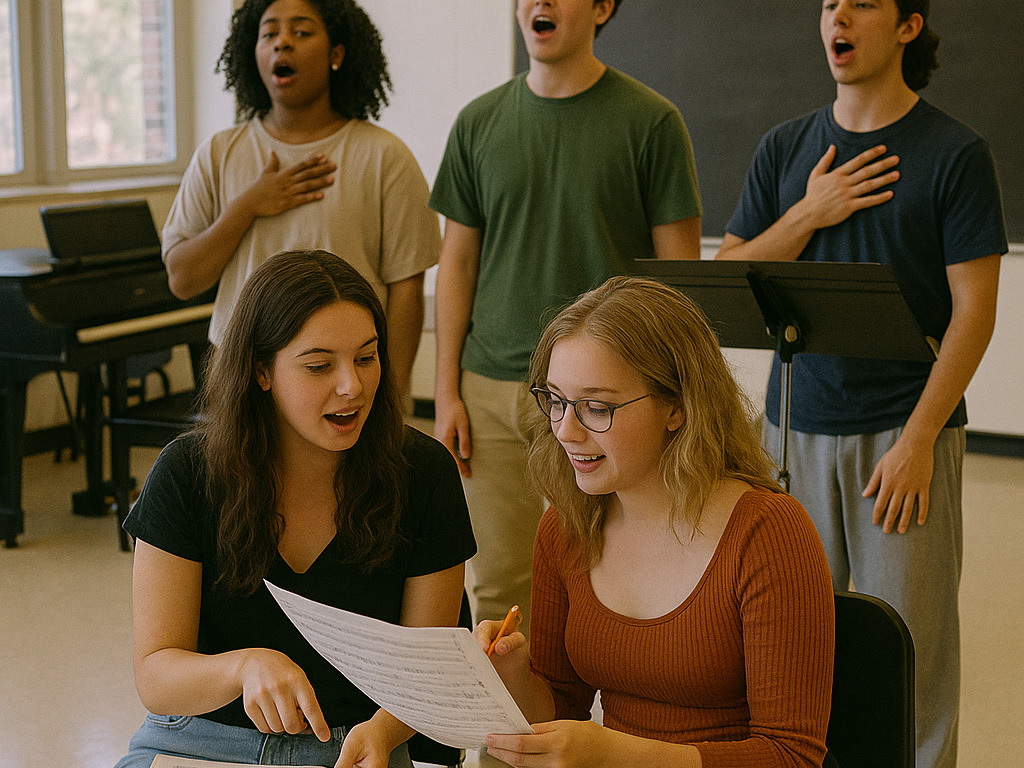Exploring the Evolution of Musical Theatre Repertoire in Higher Education
By Broadwaytrax Content Studio · October 10, 2025
Updated October 10, 2025
During the first week of class, students open their binders. You hear the same few Golden Age songs. They’re beautiful but not enough anymore. Today's musical theatre needs diverse sounds, stories, and voices. So, college programs are changing the songs they teach to prepare students better.
Why the change now? Auditions are driving it. Many programs follow the Musical Theater Common Prescreen. This includes needing a contemporary piece along with others. If we want students ready for performances and auditions in Fall 2025, our lessons must reflect these needs (Musical Theater Common Prescreen (MTCP) Guidelines).
Broadway is different today than it was a decade ago. Shows like Suffs tell stories from new perspectives (Suffs). Hell’s Kitchen, based on Alicia Keys' songs, mixes R&B and pop sounds (Hell’s Kitchen). The Outsiders brings classic literature to life with a rock flavor (The Outsiders). We still need solid singing skills, but now we also focus on folk-rock (like Hadestown), hip-hop (like Hamilton), and engaging lyrics (like A Strange Loop). This means students must learn to adapt quickly.
Earlier this week, we talked about minimal staging trends. Here, we focus on the songs we teach and perform. This repertoire is key to training.
A simple plan for a semester can help. Start with fundamentals. In early weeks, assess range, pronunciation, and style knowledge using a Golden Age piece. Focus on breath and lines. Move to pop and rock in the middle weeks. Teach microphone use, rhythm, and style mixing. End with hip-hop and spoken song, where rhythm drives the story. Wrap up with a lab on new authors. Students should research songwriters, their intentions, and their audiences. Finally, have them create an audition package with one Golden Age piece, one contemporary song, and one pop/rock or hip-hop track. This matches prescreen expectations, so students leave with ready-to-perform material (Musical Theater Common Prescreen (MTCP) Guidelines).
Teaching technique is just as important. Contemporary Commercial Music (CCM) isn’t a quick fix. It’s a research-based method. Teach students how to choose singing styles, belt safely, and mix different sounds without strain. Treat all styles with equal attention (Contemporary Commercial Music (CCM) and Classicism: The Voice Pedagogy Frontier (Jeannette LoVetri, Journal of Voice)). Build an inclusive environment while training voices. Use the NATS Inclusion Statement as a guide for creating a supportive classroom (NATS Inclusion Statement and DEI Resources).
It’s also crucial to connect repertoire to students' lives. Use culturally responsive teaching to link songs to their backgrounds. Provide brief notes on each piece’s history. Who wrote it? What’s its cultural context? These insights help students engage meaningfully (Culturally Relevant Pedagogy 2.0: a.k.a. the Remix (Gloria Ladson-Billings)). For hip-hop projects, PBS has free lessons to help teach rhythm and flow safely (Hamilton’s America (PBS Great Performances) – Educator Resources).

Some material may require care with language or staging. Set clear practices around consent before starting. Teach model choices, provide options, and clarify boundaries. There are effective tools for this work (Theatrical Intimacy Education: Consent-Based Practices).
Planning your teaching term can widen your perspective. Track songwriters and characters in a spreadsheet. Aim to include at least one work by a woman and one by a BIPOC author in each season where it’s possible. If content might be an issue, look for school or teen editions. For example, Six offers a Teen Edition that maintains the pop style while adjusting the lyrics for students (SIX: Teen Edition (Concord Theatricals)).
Assessments can promote healthy singing choices. Use a rubric that scores three areas: vocal health, style, and storytelling. For each song, note vocal choices and stamina, groove, and phrasing. Include a section to reflect on cultural context regarding songs outside a student’s experience. Connect your feedback to inclusive standards so students understand what success means (NATS Inclusion Statement and DEI Resources).
Pairing songs is a practical way to teach. For each Golden Age piece, add a contemporary song that teaches a related skill. For example, Vanilla Ice Cream helps with smooth singing and diction. Pair it with Wait for Me to develop rhythm. Heart of Stone is great for learning pop techniques and can be paired with a classic song to explore breath control. Use Memory Song to encourage honest acting through singing. Balance this with traditional ballads to create a varied learning environment. By doing this, you’re expanding your teaching, not replacing the classics.
Stock your contemporary MT unit
Browse TracksNeed good examples for your class? Recent Tony Awards clips are perfect for showing different styles and acting choices (The Tony Awards (official channel) – Recent Musical Performances). Tiny Desk performances are useful for looking at folk-rock pacing and microphone technique (Hadestown – Tiny Desk Concert (NPR Music)). For teachers, NATS webinars offer great strategies for today’s singing styles (NATS Official YouTube – CCM and Pedagogy Webinars).
None of this replaces healthy habits. In previous discussions, we put voice care first. Here, we focus on style and storytelling. Together, they help students develop voices ready to tell diverse stories. This is the aim of higher education today: to train graduates who can smoothly transition between various styles. They leave with more than just high notes; they gain tools for their art and care. They not only leave prepared for auditions but also with songs ready for performance. That’s a triumph in any classroom.